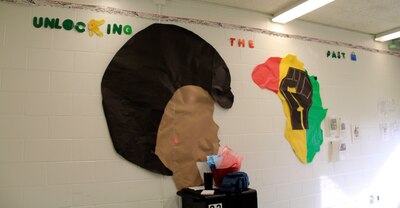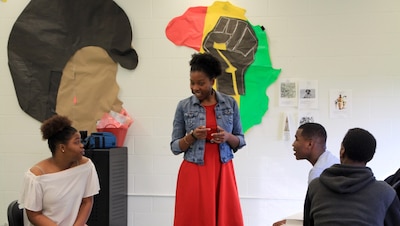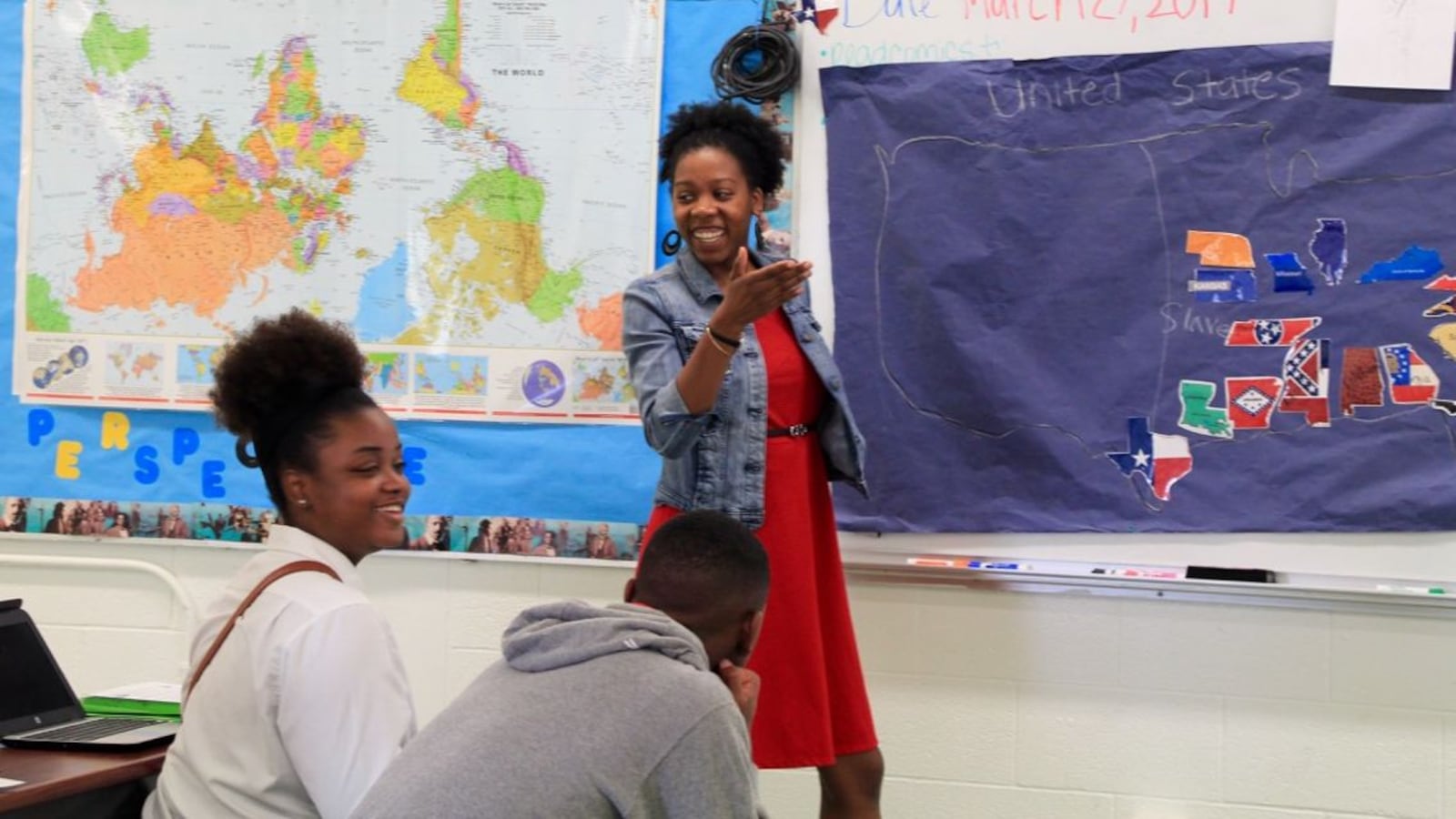How do teachers captivate their students? Here, in a feature we call How I Teach, we ask educators how they approach their jobs. You can see other pieces in this series here.
During her African-American history classes, Natasha Wilkins asks her high school students to answer this question in a “free writing” exercise: “Who is responsible for educating the public about injustice?”
The students type away while listening to R&B singer R. Kelly’s “The World’s Greatest,” which isn’t uncommon. Wilkins has made a point of integrating music into her classroom at GRAD Academy Memphis, a charter high school within Tennessee’s Achievement School District. Her class culminates with a “Hip Hot History” project, a mixtape produced by her students, who write the lyrics and record their songs in a studio to share their learning.
When asked how she answered the writing prompt, one student said that, thanks to Wilkins, she believes that she is responsible for educating the public about injustice. “I think understanding injustice has a lot to do with understanding history, real history,” the student said. “We can’t care about something we don’t know about.”
That’s the goal of Wilkins’ class: To help her students, most of whom are black, understand the history of their ancestors and to have fun while doing it.
We asked Wilkins to explain more about her teaching style and how she helps her students “own” history.
Why did you become a teacher?
Of my friends from high school, none of my black male friends graduated from or even made it past their sophomore year of college. I was deeply frustrated by the realization that there was a system in place that left young black men feeling inadequate to pursue their educational goals, and I took the offense personally. I joined Teach For America with the desire to disrupt this cycle.

What does your classroom look like?
My classroom is a space designed to inspire and affirm. There is student work that lines the walls and quotes designed to push my students to think beyond what is in a textbook. I think a big part of my classroom is also what is not present. I very intentionally did not put up many images of people from the past. I want my students to view history as not just acts and individuals from the past, but an ever-evolving story of which they are a part.
How do you respond when a student doesn’t understand your lesson?
I tend to reframe it in terms of their lives. For example, I related the Civil War to gang warfare, and the division of the North and South leading up to the Civil War to a dating relationship gone bad. Putting the lesson in terms of things my students can relate to gives them confidence in the classroom and affirms that learning is for them, not just something that they do in a school, in a classroom.
How do you get to know your students and build relationships with them?
At the beginning of the year, I do a short unit exploring what history is and how what becomes defined as “history” is determined and recorded. My students explore their perceptions of history and then are given the opportunity to record a story from their lives (also available on SoundCloud) in a project called Our Stories, Our Voices.
I explain to my students that we are all a part of history and that each of us deserves the chance to tell our own stories in our own voices. In this project, I allow my students to tell their stories how they perceive them, in their dialect, in their reality. This is essential to building relationships because it gives my students the space to be themselves, but it also gives me insight into what makes them who they are and the joys and pains that they bring into the classroom.
Tell us about a memorable time — good or bad — when contact with a student’s family changed your perspective or approach.
In 2015, I was engaged in a heated discussion with my World History honors class about the inequalities in the education they were receiving versus what I received in my predominantly white high school in Illinois. I was explaining to them why I was giving them the assignments I did, and why I taught the way I did, because that’s what my teachers did and it worked for me.

It was during this conversation that one of my more reserved students yelled out in frustration, “But this ain’t Springfield, Ms. Wilkins, and all of that Springfield stuff don’t work for us out here in Memphis. We’re different.”
This was a pivotal moment of realization in my teaching. It was in that moment that I finally heard my students and their frustrations and I realized that I needed to step back and learn from them just as they learned from me.
Describe Hip Hot History. Where did the idea come from, how do you implement it in your classroom, and why has it been a success for your students?
The idea for this project actually started as a joke. In class I would often play instrumentals and rap about history or getting back on task, to the amusement of my students. The students started asking me if I was going to drop a mixtape soon and I told them I would. One day, one of my students asked if the class could be on my mixtape and from there Hip Hot History was born.
This project is the capstone project my students complete at the end of the year. They are given the choice of writing a song, spoken-word piece, or creating a documentary film telling the story of blacks in history. They are given full creative license to create their piece with guidelines on how to choose the topic and the length of the piece.



